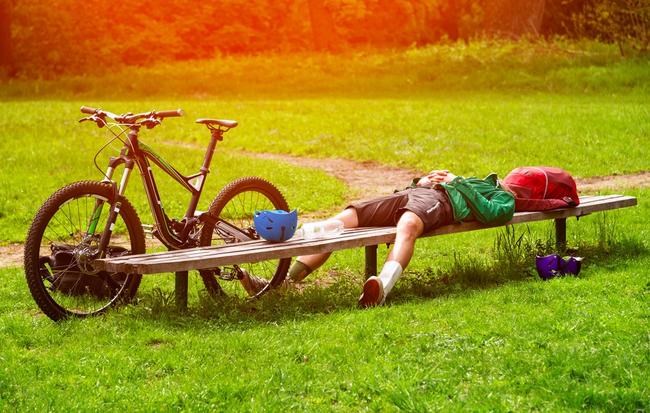RELATED: The 4 Secrets to RecoveryWeight gain is only one side effect of adopting a totally sedentary lifestyle in the off-season; an additional aspect is the loss of many of the training adaptations gained during the previous year. Still, a short period of inactivity—two to three weeks of rest—won’t reverse the chronic adaptive changes you worked so hard for.
However, two to three months of inactivity can result in an almost complete reversal of training gains. With an excessively long period of inactivity, riders will be unlikely to deliver better performances, as they’ll effectively be starting training again from scratch. In contrast, building on the previous season’s gains can result in a progressive improvement over a period of five to eight years, and an eventual peak of performance that would not otherwise have been possible. (We term this a “chronic training adaptation.”)
What constitutes an optimal off-season?
The general consensus at this time is that a few weeks of active rest are sufficient to allow psychological and physical recovery from the stresses of the previous season. By “active rest,” we mean lower-intensity activities that differ to those that you’d do during the season. These could include hiking, swimming, surfing, rock climbing and other fun activities. If you participate primarily in road racing, then some relaxed mountain bike riding can also be included, or vice versa.
RELATED: Is Coke a Good Recovery Drink?
The exact duration of the rest period should be determined by how long and strenuous your previous season was. However, a few weeks should suffice; and in general, when you feel energised and enthusiastic once more about the coming season, then you’re probably ready to start training again.
This will then take you into the pre-season conditioning period. In the past, this has largely meant low-intensity training, combined with strength and stability work in the gym. A new approach now gaining acceptance is the incorporation of intermittent high-intensity training in the pre-season. Recent research has demonstrated that this is effective in maintaining many performance adaptations that would otherwise be lost if you waited until later in the season before doing high-intensity interval training again.


